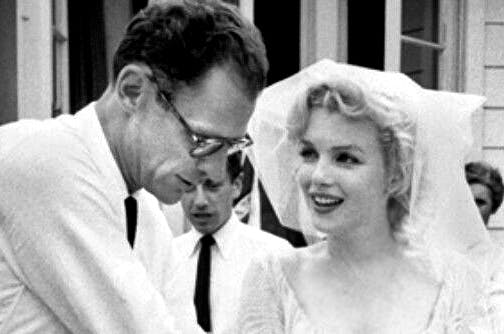Couples Biography: Wives’ Tales
What does it say about a wife if the conclusion is reached that she was not the weaker partner and yet put up with an unequal spouse? A group biography answering that question needs to be written.

‘Lives of the Wives: Five Literary Marriages’
By Carmela Ciuraru
Harper 336 pages
‘When Eero Met His Match: Aline Louchheim Saarinen and the Making of an Architect’
By Eva Hagberg
Princeton University Press, 232 pages
For a long time I’ve been wanting to review a group biography that perhaps could be called “The Last Wife,” the unwritten story of how certain women hang on, no matter what, to make sure they are in positions to have their husbands’ biographies told their way — as in the cases of Mary Hemingway and Elaine Steinbeck.
Meryl Secrest has done some of the work already in “Shoot the Widow: Adventures of a Biographer in Search of Her Subject” (which I reviewed for The New York Sun in June 2007), and of course we have biographies of wives, like Stacy Schiff’s “Vera” (1999) and Timothy Christian’s “Hemingway’s Widow” (2022). But I’m proposing something different: a book looking squarely at the psychology of several wives who refuse to go away, no matter how difficult their marriages might be.
For now, I will have to settle for Carmela Ciuraru’s concentration on five couples: Kenneth Tynan and Elaine Dundy; Roald Dahl and Patricia Neal; Elizabeth Jane Howard and Kingsley Amis; Una Troubridge and Radclyffe Hall; Elsa Morante and Albert Moravia.
The biographer begins with a bang, quoting Margaret Atwood’s riposte to the famous Jane Austen line about a “single man in possession of a good fortune” wanting a wife: “Longed for him. Got him. S—.” Ms. Ciuraru’s introduction is titled, “What’s a Wife To Do?” I have no quarrel with her approach, except to invoke a quip even more famous than Austen’s opening line of “Pride and Prejudice”: “It takes two to tango.”
Someone has to take the lead, though, and so we get Eva Hagberg, who once had a job assuaging “the egos of fragile architects.” She writes as an insider, having worked in architectural publishing and writing about it since 2003. This experience has led her to question the way history and biography have been written, and the role of the press in making certain architects “important.”
All of these men had press agents, she wrote, crafting “invitations and pitches … images were embargoed … quotes were given only when fully controlled.” History, she concluded, was missing a “major actor.”
Here’s the nut of Ms. Hagberg’s argument: “We will look at how a woman in the 1950s pretended to be goofy and forgetful so as to expertly advocate on behalf of her husband’s interests, and we will look at how that performance still echoes today.” This biography is no mere exposé, though, as the biographer admits she fell in love with her subjects and wanted to “absorb some of their creativity, and their love, for myself.”
What is striking about the Saarinen duo is that they perform a high-level deception that shapes and sometimes distorts history. I thought immediately of the assassinated Reinhard Heydrich, who left behind a wife well practiced in dissembling for biographers until she was outed, as I suggested in my Sun review of Nancy Dougherty’s “The Hangman and His Wife: The Life and Death of Reinhard Heydrich.”
Such marriages, for evil or good, are collaborations that biography has to probe. It may look like Marilyn Monroe (regarded by many in the 1950s as a goof) is clinging to Arthur Miller in the famous photographs of them together, but as he only dimly realized, she was holding him up. He eventually resented his reliance on her, and so did she when she realized not much was coming out of that typewriter and study she had lovingly set up for him.
Read Sylvia Plath’s journals and letters, and you get a similar story. In photographs, Ted Hughes looks like the strong one, but it turns out that this tall chap needed a lot of care and feeding, and Sylvia had to be chary about his fitful moods.
With Plath and Monroe, readers tend to take sides, often supposing the men were villains, but to let it go at that presents a problem that these books under review confront: What does it say about the wife if you conclude she was not the weaker partner and yet put up with an unequal spouse? The group biography answering that question still needs to be written.
Mr. Rollyson is the author of the forthcoming “The Making of Sylvia Plath.”

